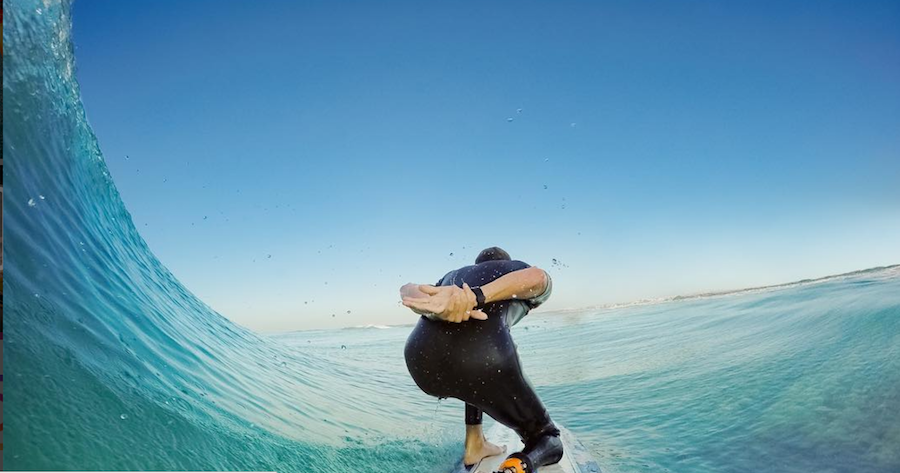GoPro reported second quarter results that came in well above internal guidance, forecast a smaller-than-expected loss for the third quarter, and indicated it was on track to launch the latest version of its flagship camera by the holiday season to all support its goal of returning to adjusted profitability in 2017.
Shares of GoPro were trading ahead $1.76, or 21.31 percent, to $10.02 in early-afternoon trading on Friday on the developments.
GoPro reported second quarter revenue was $297 million, up 34 percent year-over-year and 36 percent quarter-over-quarter.
The revenue growth was principally driven by demand from its HERO5 Black camera and sequential revenue growth from Karma. Camera units shipped was over 1 million in the second quarter, a sequential and year-over-year increase of 44 percent and 40 percent, respectively. GoPro’s HERO5 Black camera with the retail price point of $399 accounted for over 60 percent of its camera units shipped in the quarter and over 70 percent of the total second quarter camera revenue.
Camera unit sell-through increased globally by more than 18 percent sequentially, driven by HERO Session and HERO5 Black. According to NPD and GfK, GoPro’s year-over-year global unit sell-through declined approximately 9 percent, which is partially attributable to our Q2 2016 discounting of legacy products that drove higher than normal sales volumes for that period. HERO5 cameras continue to outsell HERO4 cameras on comparable launch periods, and unit sell-through increased 13 percent at price points above $300.
Gross margin for the second quarter was 36.2 percent, up from 32.3 percent in the first quarter of 2017. The sequential improvement was due to stronger HERO5 camera mix as well as cost improvements across our supply chain.
Adjusted EBITDA was a positive $5.21 million against a loss of $76.8 million a year ago.
Results came in above GoPro’s guidance. Revenue was expected to come in between $260 million and $280 million. Adjusted EBITDA was expected to be a loss ranging from $10 million to $20 million.
The net loss on a non-GAAP basis was reduced to $12.9 million, or 9 cents a share, from a loss of $72.6 million, or 52 cents, in the same period a year ago. Analysts were expecting a loss of 25 cents. The net loss on a reported basis was reduced to $30.5 million, or 22 cents, from $91.8 million, or 66 cents, a year ago.
On a conference call with analysts, Founder and CEO Nicholas Woodman also noted that inventory was down 39 percent in the quarter, positioning the company to manage new product releases later this year.
He noted that for third consecutive quarter, its premium priced camera, HERO5 Black, was the best-selling camera in the United States, and GoPro’s drone, Karma, ws the nation’s number two selling drone brand.
Second quarter gross margin was 36 percent, a sequential improvement, buoyed by the margin strength of HERO5 Black and HERO5 Session. Margins are expected to continue to improve throughout 2017 with the introduction of new products. Woodman also said the company remains on track to reduce its annual operating expenses by 30 percent year-over-year to less than $495 million.
“To summarize, we’re seeing strength across our business, thanks to strong demand and improved focus and execution,” said Woodman. “We continue to track toward our goal of low double-digit revenue growth and full year non-GAAP profitability in 2017. While it’s encouraging to see improved momentum in our business, we’re particularly excited about innovations in our roadmap that will enhance our relevance to consumers in this increasingly smartphone-centric world.”
Last week, he noted, GoPro launched QuikStories, a new GoPro App feature that automatically copies footage from a GoPro to the user’s phone. The GoPro App then creates ready-to-share video for the user.
Woodman called QuikStories the “biggest leap forward in ease of use since the invention of the GoPro itself,” and expects it to be “game-changing” for customers and the business.
“GoPro has sold more than 26 million cameras since the launch of the HD HERO in 2009. And today, we are the most followed consumer electronics brand on Instagram,” said Woodman. “Yet, we achieved this with a sharing experience that proved challenging for most of our customers. What happens now that sharing with a GoPro is as easy as QuikStories? We believe the answer is growth. Growth further fueled by the megatrend that is sharing from smartphones to platforms like Instagram, YouTube and WeChat.”
“GoPro is building momentum,” Woodman added. “Strong demand combined with our cost management and margin initiatives contributed to GoPro’s EBITDA positive performance in the second quarter. HERO6 and Fusion, our 5.2K spherical camera, are on course to launch later this year and we continue to track toward our goal of full-year, non-GAAP profitability in 2017.”
GoPro forecast third-quarter adjusted loss of 1 cent to 11 cents per share and revenue of $290 million to $310 million, compared with analysts’ estimate of a loss of 12 cents per share and revenue of $278.5 million.
Photo courtesy GoPro
















